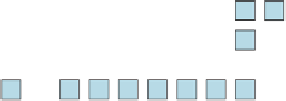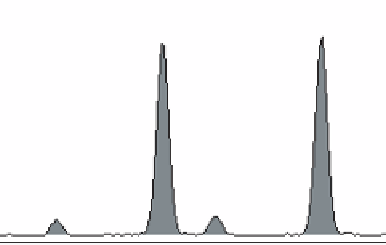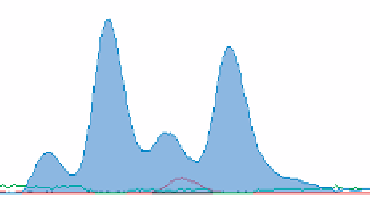Biology Reference
In-Depth Information
T
T
T
C
Template strand
3
′
5
′
T
C
T
T
T
C
T
T
T
C
T
T
T
C
T
T
T
C
T
T
A
G
A
A
A
G
A
A
A
G
A
A
A
G
A
A
Extension
3
5
′
′
Nascent strand
Figure 7.1
During PCR slippage between the template and the nascent DNA strands leads to the
copied strand containing one repeat less than the template strand
20.5%
39.5%
8.4%
11.9%
2 bp
2 bp
4 bp
4 bp
(a)
(b)
Figure 7.2
Stutter peaks are formed during slippage of the
Taq
polymerase during replication of
the template strand. The slippage results in amplification products one repeat unit shorter than the
template. The stutter peaks are normally less than 15% of the true amplification product. (a) A
dinucleotide repeat which is prone to high levels of slippage; the stutter peaks are indicated by the
arrow and their size relative to the main peak is shown (based on peak area). (b) A tetranucleotide
repeat which displays lower levels of stutter
5
′
3
′
Template
3
′
5
′
3
5
′
′
A
PCR product
A
5
′
3
′
Figure 7.3
The
Taq
polymerase adds a nucleotide to the 3' end of the newly synthesized strand.
The non-template addition is usually an adenine and results in a PCR product that is 1 bp longer
than the template (N
+
1). The arrowed lines represent the forward and reverse primers

































